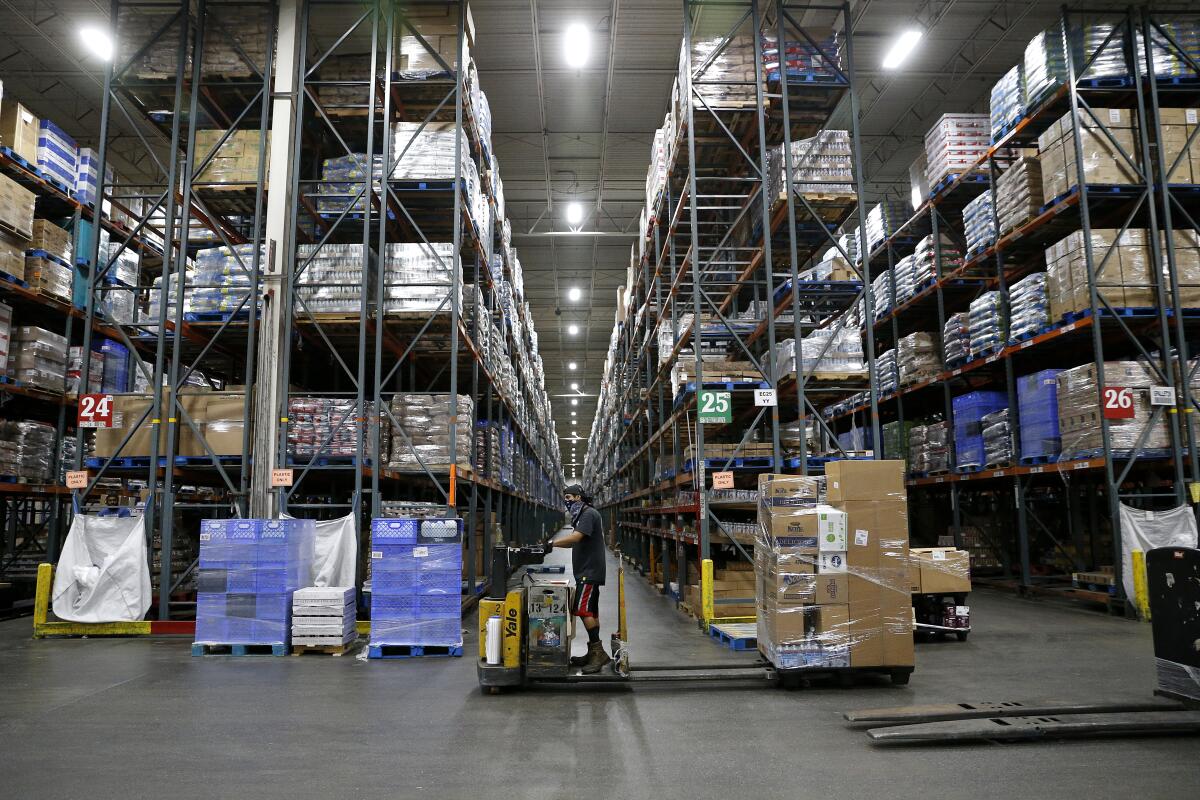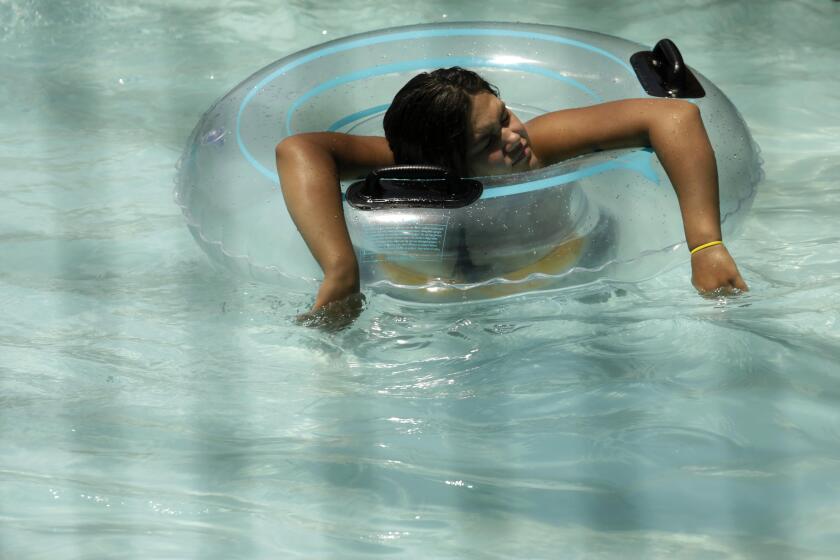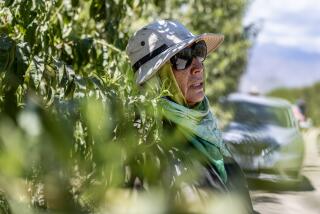Study: Hotter temps increased workplace injuries in California; incidents undercounted

- Share via
Hotter temperatures in California significantly increase the risk that workers will be injured on the job, according to a new study that finds these incidents are vastly undercounted in official records.
The study, to be published next week by the Institute of Labor Economics, was conducted by three researchers at UCLA and Stanford who gathered information on about 18 years’ worth of claims from California’s workers’ compensation system — the largest in the country — and compared it to daily temperature data. They found that workplace injuries and accidents increased by as much as 9% on days when temperatures were in the 90s and rose by as much as 15% on days in the 100s.
Though much of the research and media attention has been on how heat affects people who work outdoors in agriculture and construction, the study found that high temperatures increased accidents for indoor workers, too, endangering people employed in manufacturing, warehousing and wholesale.
“Heat is of those things where our familiarity with it may engender a sense of false security,” said Jisung Park, a UCLA economist and the lead author of the study. “But this and other research suggests that hotter temperatures, which in many cases may not seem like such a big deal, appear to have hidden costs.”
Swaths of California saw record-breaking temperatures this weekend amid an intense heat wave that has increased fire risks and strained the energy grid.
The types of injuries weren’t isolated to heat sickness or exhaustion. Workers were more likely to fall, be hit by a moving vehicle or mishandle dangerous machinery — accidents that researchers suggested could be the result of heat’s ability to impair decision-making.
Judging by official records alone, one would think that heat-related workplace injuries are rare. In California, only about 850 injuries per year are classified as being caused by extreme heat. But by looking at whether injuries increased on hot days, the researchers discovered the true tally is likely much greater.
In total, rising temperatures caused about 20,000 additional workplace injuries per year, imposing an estimated cost of $1 billion on workers, employers and the state as a whole, according to the study.
The study adds to a growing body of research finding that heat has a much greater effect on us than previously understood. One 2019 study found that a 10-degree increase in temperature made it less likely that American immigration judges would make decisions favorable to applicants. Another study, a working paper from 2018 that Park wrote as a PhD student, found that New York City students were more likely to fail an important state exam on a 90-degree day than when it was 72 degrees outside.
The latest study builds on work by Marcus Dillender, an economist at the University of Illinois at Chicago’s School of Public Health, who established a link between rising temperatures and on-the-job injuries in Texas. But Park and the other researchers were able to draw more detailed conclusions about how heat affects different types of workers.
They found that when temperatures rise, the burden is not shared equally. Men and younger workers are at much greater risk of injury on a hot day, even in indoor settings.
Low-wage workers fare the worst, in part because they tend to work in more dangerous jobs, and they often live and work in the hottest parts of the state. The study found that someone in the bottom 20% of earners was five times more likely to be injured on a hot day than someone in the top 20%. Because workers’ compensation and health insurance cover only a fraction of these employees’ lost wages and medical bills, the research suggests that rising temperatures could also fuel income inequality.
Toward a more sustainable California
Get Boiling Point, our newsletter exploring climate change, energy and the environment, and become part of the conversation — and the solution.
You may occasionally receive promotional content from the Los Angeles Times.
One might expect that these trends would worsen over time as climate change makes heat waves in California more frequent and more severe.
But to the researchers’ surprise, the data showed that heat began to have less of an effect around 2005, at roughly the same time California adopted a heat illness prevention regulation that required outdoor workers to be given shade, water and training on ways to avoid heat exhaustion. After 2005, the study found, the connection between heat and workplace injuries was still there, but it wasn’t as strong.
Park cautioned that more research would be needed to understand whether the state’s outdoor heat regulation was truly effective. Although the regulation has been in place for over a decade, enforcement has been sporadic, and there are still reports of California farmworkers dying during heat waves. But he said the findings suggest there are things employers can do on hot days to prevent workers from getting hurt.
Dillender, who was not involved in the study, said the results offered more reason to be hopeful than previous research.
“They’re finding some evidence that people can adapt, that policy levers can mitigate some of the adverse impacts,” he said.
The California Division of Occupational Safety and Health, or Cal/OSHA, is working on similar regulation that would protect workers in indoor settings. Although the agency was, by law, supposed to have the rule in place by 2019, it has been repeatedly delayed.








